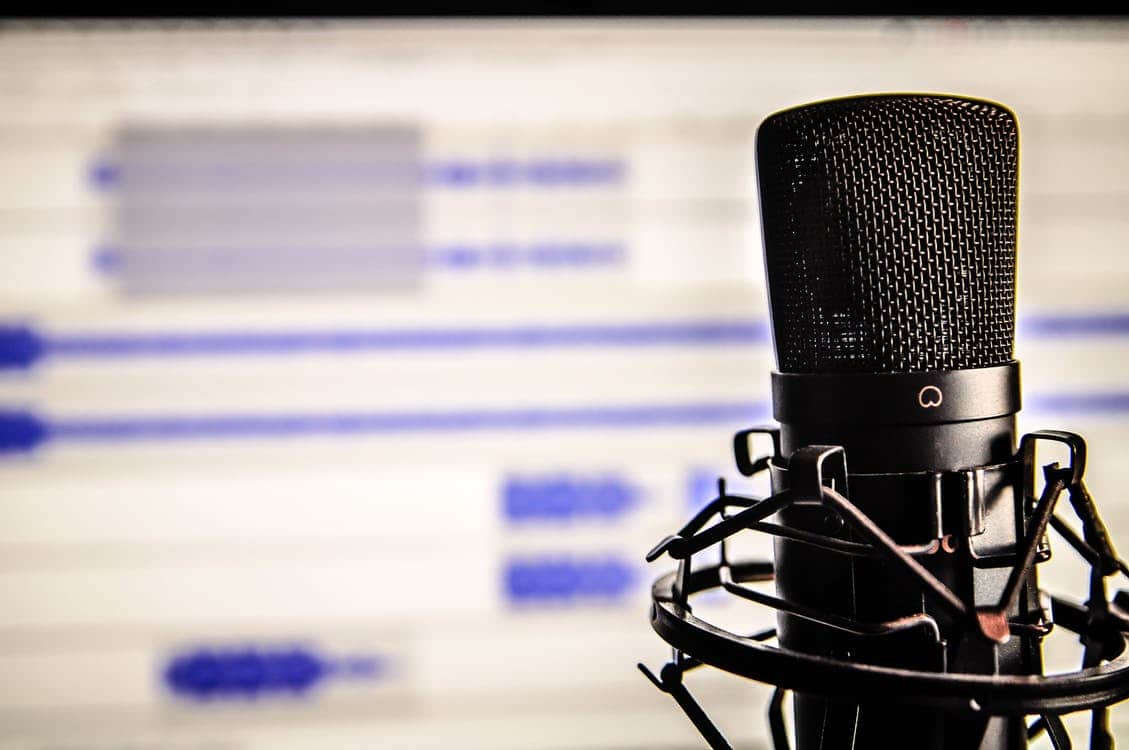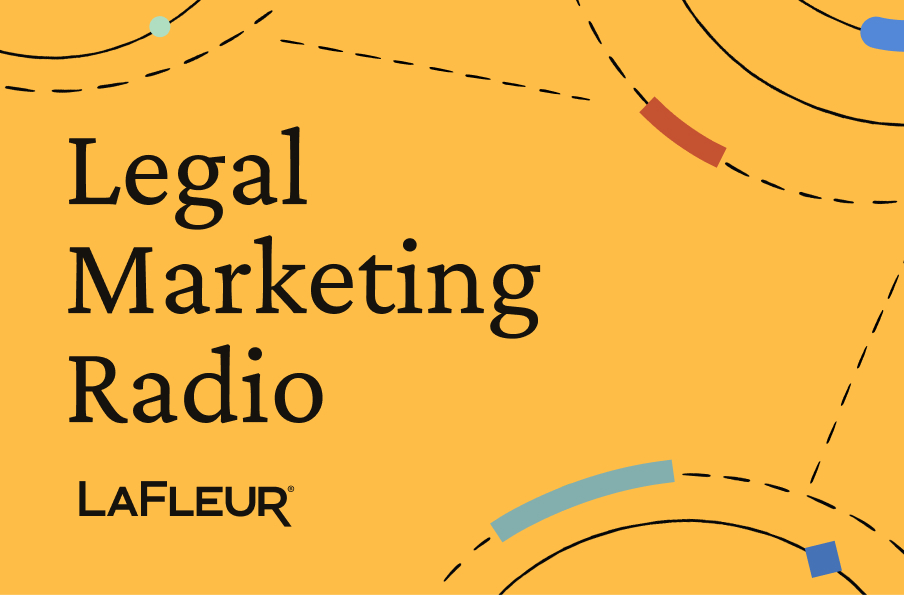Lots of companies are adding podcasts to their digital marketing mix right now — and with good reason. Podcasts are a booming business. According to a 2016 report from Edison Research, more than 57 million Americans listen to podcasts on at least a monthly basis, which represents a 23 percent increase over the previous year.
Of course, the legal industry is a lot different from most others, and what works for businesses that sell consumer products may not work for attorneys. So, is podcasting something you should seriously consider as part of your digital marketing plan?
In this article, we’ll try to answer that question as best we can, and if you’re interested in creating a podcast and building an audience, we’ll provide some helpful tips that can get you started.
The Case for Adding a Podcast…
We’re big on the written word here at LaFleur, but let’s face it: lots of people don’t like to read. Video is an incredibly powerful form of content for that reason, but for most law firms, it’s not feasible to produce and publish high-quality videos consistently.
Podcasting, however, offers a great compromise that can help you connect with the sizable segment of your audience that simply isn’t inclined to click through to your written content, no matter how engaging you make it or how well you promote it.
Compared to shooting video, podcasting is surprisingly inexpensive and beginner-friendly. I can promise you don’t need thousands of dollars in audio gear or professional sound engineering experience to make a great-sounding podcast that showcases your firm’s unique selling points and your own distinctive personality.
In addition, launching a podcast will help you capitalize on the ubiquity of smartphones and your audience’s growing desire for convenient content they can consume on the go. With blog content, you’re only engaging your audience when they have a few minutes to sit down and read, but with a podcast, you can connect with them at the gym, in their cars, or while they’re taking their dog for a walk.
Podcast listeners are loyal, too: 88% of them say they listen to most or all episodes once they subscribe to a podcast, according to a 2014 listener survey from the digital media company Midroll Media. The relative loyalty of podcast audiences means that podcasts are a great medium for trust-building, which is especially important for lawyers, who usually need to inspire a lot of confidence before a potential client will sign on.
And a podcast also helps you stand out from your competitors, which is important in areas like personal injury law where the competition is fierce and lots of firms are sending out similar messaging.
Finally — and don’t underestimate this perk — podcasting is fun. There’s not really a way to interact with your peers in the legal industry on your blog in a natural and enjoyable way, but podcasting lets you call up some of your favorite legal colleagues and thinkers, have fascinating conversations with them, and turn those talks into valuable digital marketing assets. What could be better than that?
…and the Case Against
The arguments against trying to start up a podcast are relatively simple: it takes effort and dedication, and you won’t necessarily see any return on your investment right away. Podcasting is a medium in which people tend to follow their favorite shows loyally and expect new episodes from them on a regular basis, which is a major benefit for established podcasters but can create a bit of a hurdle for new shows.
In fact, most experts suggest that it takes 20 or 30 episodes to really get a podcast on solid footing, and I’ve read arguments that you shouldn’t even bother to release your podcast to the public until you’ve got a dozen or so episodes ready to go. It’s simply too difficult to get people excited about a podcast that only has two or three episodes and might never get off the ground.
All of this means that if you’re not willing to commit to at least a year of consistently publishing new podcast episodes on a weekly or at least monthly basis, there’s probably no point in getting started because a few standalone episodes won’t generate any value.
If you can keep at it, though, and you keep the quality level of your podcast high, you may find it helps you tap into a completely different and highly valuable audience that you’ll never engage successfully with through written content.
Deciding on an Editorial Direction for Your Podcast
Okay, so your inner radio personality is starting to come out of his or her shell and you’re convinced podcasting is for you. Now you’ve got to answer the most important question: What do you want your podcast to be about?
The obvious answer is the law, but that’s far too general, so you need to put some serious thought into what you want the finished podcast to look like and what you want to talk about within your legal practice areas. Do you want to answer questions from listeners in a call-in-show type of format? Or do you want to host weekly conversations with you and a colleague — two legal minds exploring the issues of the day? Maybe some combination of the two?
(A great way to answer these questions, by the way, is to listen to some of the best legal podcasts out there and figure out what you might want to emulate from the ones you really like.)
The nature and content of your podcast are up to you, and the best way to figure them out is to follow your curiosity and tap into three things: your own passions, the issues your clients tend to want to know about, and where those two things overlap.
However, I’d strongly suggest including noteworthy and interesting guests on your podcasts as soon as you feel confident doing so. It’s fine (and perhaps even recommended) if the first few episodes of your podcast are just you talking into the microphone for 30 minutes or so as you learn the basics of how to record, edit, and publish episodes, but you’re going to get tired of that quickly, and it’s also going to hold you back from reaching the widest and most targeted audience possible.
By bringing guests onto your show, you’ll not only keep yourself and your listeners interested by stoking discussions with a variety of legal experts, but you’ll also get built-in cross-promotion when they share the episodes with their own social media and website audiences.
Ready to Start Podcasting? Here’s What You Need
As I said before, there’s no need to spend thousands of dollars on podcasting gear, especially if you’re just starting out. In fact, you can put together a beginner’s podcasting kit that will yield surprisingly professional-sounding results for roughly $100.
Some of the essential items in that kit include:
- A quality microphone that’s suitable for podcasting. This one is non-negotiable. The quality and suitability of your microphone can completely make or break your overall audio quality, and if you end up with poor-quality audio, you can bet that most listeners will get irritated and check out before you finish your introduction.When I say you need a quality microphone though, it absolutely doesn’t mean “professional-grade.” There’s an incredible range of high-quality consumer microphones available these days that are perfectly suitable for podcasting, with some of them costing less than $100.My pick (and the mic I use to record our podcast, Legal Marketing Radio) is the Audio Technica ATR2100-USB Dynamic Microphone ($64.59 on Amazon). Since it’s a USB microphone, it plugs right into your computer with no need for an amplifier or mixing board or any other piece of equipment that plugs in between.
While there are lots of other viable microphone options, note that there are two types of microphones: dynamic and condenser. Without getting into all the differences, condenser microphones are what professionals use in recording studios to record people’s voices, so it’s natural to think they’d work great for recording your voice, too.
The problem with condenser mics, though, is that they’re extremely sensitive, so unless you have a completely soundproof environment to record in, they’ll pick up street noise, the hum of the air vents, and somebody coughing three rooms over. Avoid buying a condenser microphone unless you’re prepared to also build a recording studio to go with it.
- A windscreen or pop filter for your microphone. A pop filter is a circular disk that hangs in front of your microphone and prevents gusts of air from blowing onto the microphone. Right now, you might be thinking, “big deal — I’m not recording in the back of a flatbed truck.” You’ll find, though, that you have to get pretty close to a dynamic mic when recording, and when you speak into a microphone that close, the air that you blow out of your mouth when you make a “p” or “b” sound will show up as an annoying popping noise (audio professionals call this a “plosive”) in your recordings. A pop filter between your mouth and the microphone will solve this problem straight-away.Another option that doesn’t do quite as good of a job, but can work well enough, is a foam windscreen like the kind you see newscasters use when they’re outdoors. This won’t prevent plosives completely, but it will help a bit. I personally find the pop filter intrusive, so I use a foam windscreen and try to hang my microphone off to the side of my face rather than directly in front of my mouth, which gets the job done nicely.
- A microphone boom arm to hold your mic up. The ATR2100-USB mic I recommended comes with a little tripod, but it’s very short and not suitable for holding your mic next to your face unless you’ve got a desk that sits at about chin height. You’ll need to solve this problem one way or another, and I recommend doing it with a microphone boom arm like this cheap one I use from Neewer ($12.50 on Amazon). It’s far from pro-quality — it’s noisy as heck if you accidentally bang into it or try to adjust it while you’re recording — so just make sure not to touch it while you’re recording, and you’ll be fine.Of course, you could just pile up some books and set the little microphone stand on top of those, too. The boom arm will probably make it easier to get comfortable and place yourself in a natural posture while you record, but if you want to try and make do without, then by all means, rig up a homemade solution and see if it works for you. Personally, I think the boom arm is well worth the $12.
- Audio editing software. To edit our podcast’s audio tracks and put everything together, I use Audacity, which is completely free. If the prospect of editing audio recordings sounds intimidating to you, don’t sweat it — I do it all the time for our podcast, and most of the work consists of highlighting a section of audio I don’t like and clicking “delete.” It can be time-consuming if you’re a perfectionist, but it’s neither highly technical nor hard to learn unless you want commercial-quality results (which you don’t need).In the future, we’ll try to write separate articles about audio editing and some of the other aspects of podcasting, but for now, if you want to learn how to use Audacity, just do a search on YouTube for tutorials. There are tons of them, and they’re available for even the simplest of tasks within the software, so they can help you get started no matter how unfamiliar the program feels at first.
- Headphones. You’ll need these for doing interviews and for editing the audio later. No need to go crazy here — any headphones you have should work fine. I use a $99 pair of Sony MDR7506 headphones, but I’ve forgotten them and had to do audio editing with the plain old earbuds I keep in my backpack for walking, and everything turned out fine.
That should do it for equipment you’ll need. The biggest technical challenge you’ll likely face will come when you want to record a guest in a different location. If you can get your guest to join you in the same room, you can just have them talk into the same mic as you (you could also get a second mic for a more professional setup, but you’ll also have to buy a bunch more equipment and learn some additional tricks for that, so let’s skip that option for now; we’ll explore it in a future blog post if you’re interested). But how do you make an interview work if your guest is in another city or state and needs to call into your show?
Probably the simplest solution is to have them call you via Skype. You can listen to them with a good set of headphones (so your microphone isn’t picking up their voice) and record them with another piece of software while your mic/Audacity setup records your voice. When you’re all done, you can import the file containing their audio into Audacity and match it with your own voice track to put the conversation back together.
Skype doesn’t have a built-in feature to record calls, so you’ll have to pay for an additional piece of third-party software that will do this. The best option is Call Recorder from Ecamm ($20), but it’s only available for Mac. If you’re working on a Windows machine, most reviewers agree that Talk Helper ($49.95) is the best option.
That’s it! This guide is far from the final word on how to set up a legal podcast, but it should be enough to get you on your feet so you can record good-quality podcast episodes, attract and engage new audiences, and have some fun along the way.
Contact LaFleur for Help With Podcasting and All Your Other Legal Marketing Needs
If you’re interested in launching a podcast but still feel a little overwhelmed, don’t worry. We’re happy to speak with you about building a podcast for your law firm, as well as any other digital marketing needs you may have — including content marketing, video production, website design, and more.
To find out how LaFleur can help you grow your firm and promote your brand with efficient, affordable digital marketing solutions, give us a call at (888) 222-1512 or fill out our convenient contact form. We look forward to hearing from you!
References
Podcasts by the numbers. (2014). Midroll.
Webster, T. (May 2016). The Podcast Consumer 2016. Somerville, New Jersey: Edison Research and Triton Digital. Retrieved from http://www.edisonresearch.com/wp-content/uploads/2016/05/The-Podcast-Consumer-2016.pdf




